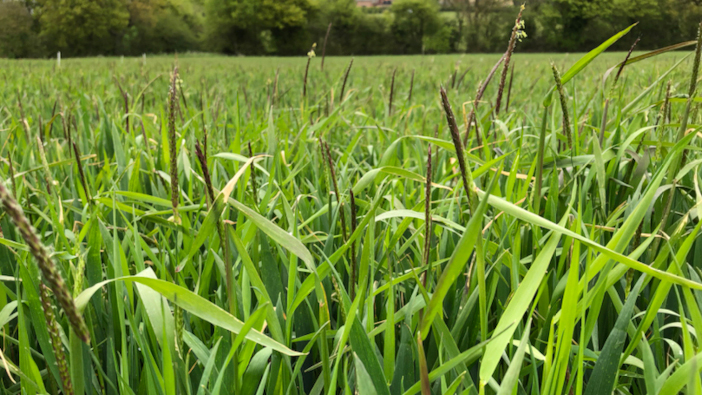With many growers looking to drill earlier this year after last year’s wet weather, ADAMA is warning that blackgrass pressure will be higher and advises growers to have a strong sequence of herbicides planned.
“The best practice and most robust advice when it comes to tackling difficult weeds such as blackgrass, ryegrass and brome is still to delay drilling until well into October,” explains Dr Bill Lankford, herbicides technical specialist. “However, given the impact last year’s abysmal weather had on rotations, it is inevitable and understandable that many growers will be reticent to wait.
With that in mind, growers should consider that if they decide to drill early, they will also need to apply a strong stack and sequence of herbicide active ingredients to ensure satisfactory levels of weed control are achieved.
“That’s especially important in a dry season when the lack of soil moisture will have a detrimental impact on residual herbicide activity. And, in addition to enhancing chemical controls, growers should also consider upping their seeding rates to offset the heightened weed pressure.”
He adds that new actives, such as aclonifen or cinmethylin, will be essential at pre-emergence to prevent blackgrass plants from overtaking early sown crops, however, these will need additional help throughout the growing season.
“Growers are therefore advised to ‘power-up’ their herbicide programmes by incorporating additional active ingredients from different mode of action groups,” Dr Lankford continues. “In addition to new actives, growers should also use diflufenican, pendimethalin and chlorotoluron to boost protection in a cost-effective way.
“For example, a programme which starts with a foundation application of aclonifen, diflufenican and flufenacet at the pre-emergence timing will be enhanced by the addition of Anthem (400 g/l pendimethalin) at the same timing, or by a post-emergence treatment of Tower (250 g/l chlorotoluron, 40 g/l diflufenican & 300 g/l pendimethalin).
“Similarly, where a foundation application of cinmethylin and pendimethalin is being used, the addition of Hurricane (500 g/l diflufenican) will help to power-up the pre-emergence treatment. This could then be followed by a post-emergence application of Tower or Omaha 2 (40 g/l diflufenican & 400 g/l pendimethalin) to extend the window of weed control.
“For the most difficult populations of grassweeds, our experience is that reduced rates of flufenacet or prosulfocarb can also be beneficial against black-grass and ryegrass respectively when included in an early post-emergence sequence,” Dr Lankford adds. “In these situations, a black-grass programme may include Tower or Omaha 2 plus flufenacet at the post-emergence timing, or Tower plus prosulfocarb where ryegrass is being targeted.”
Additional actives, in the form of tank partners or to simply extend the programme, can also help to delay the development of resistance in weeds, he adds.
“With commodity prices a little more buoyant than this time last year, the weather remaining as unpredictable as ever, and weed pressure likely to be as high as it has ever been, it makes sense to protect new crops with a strong programme of multiple herbicide actives,” Dr Lankford concludes.


